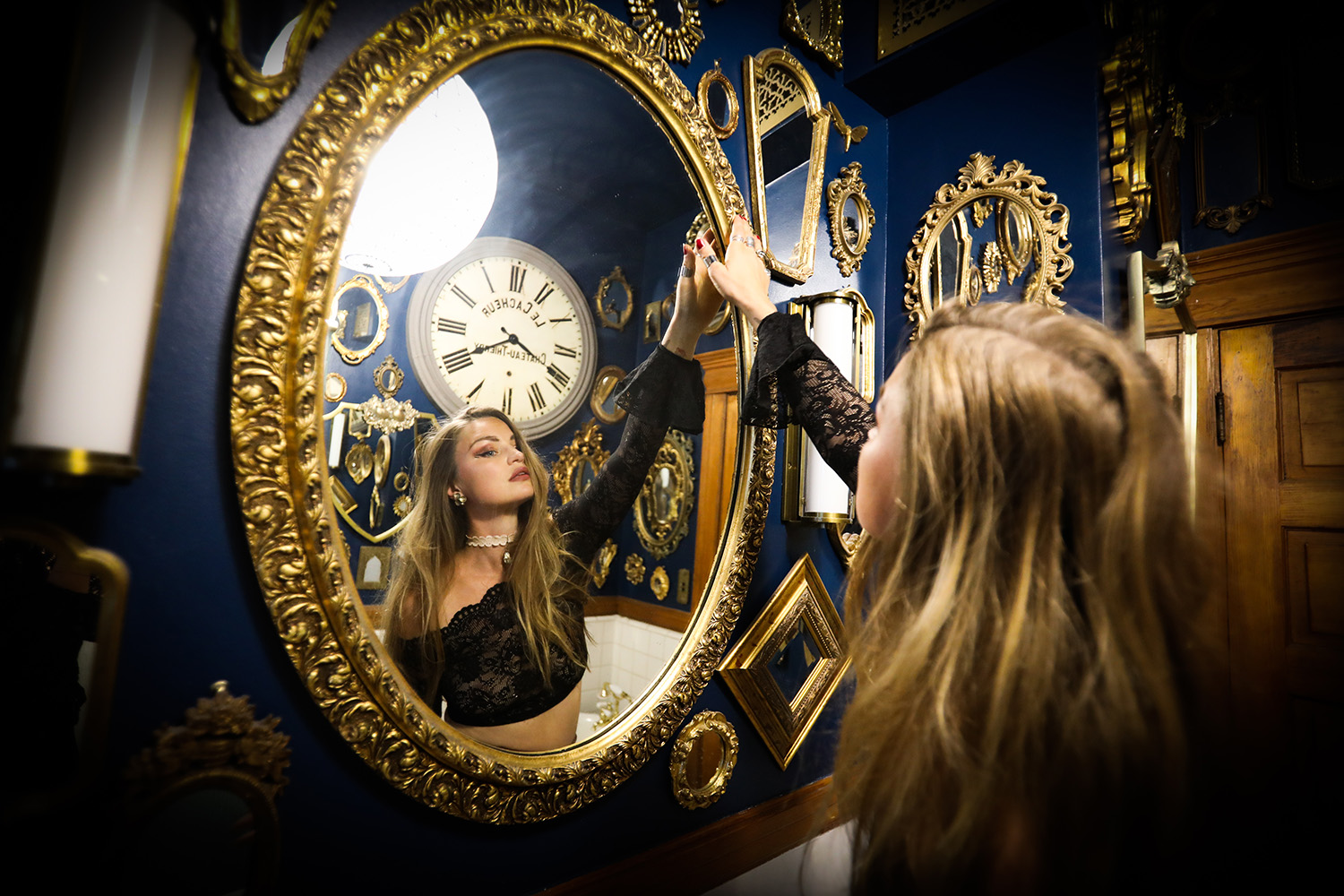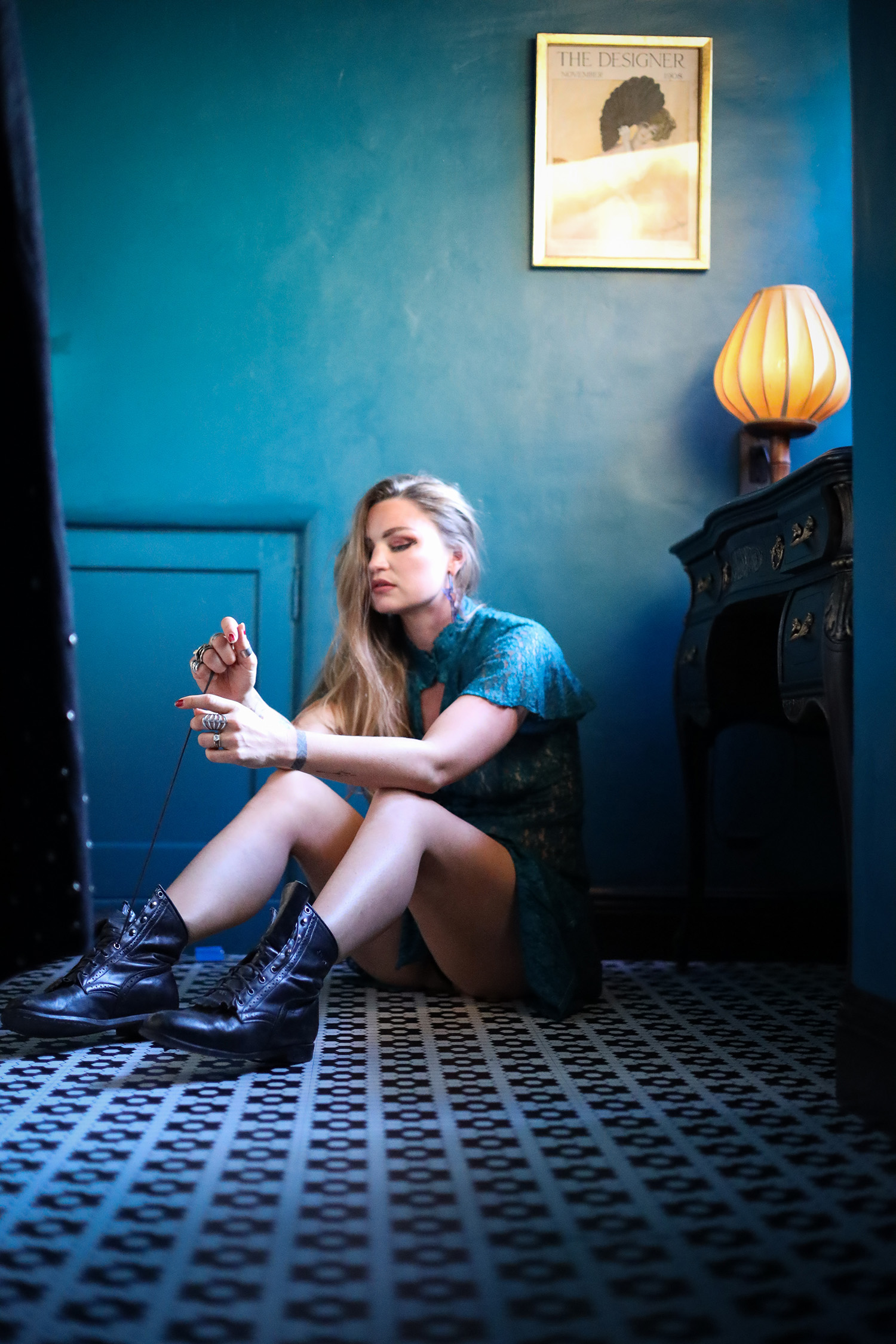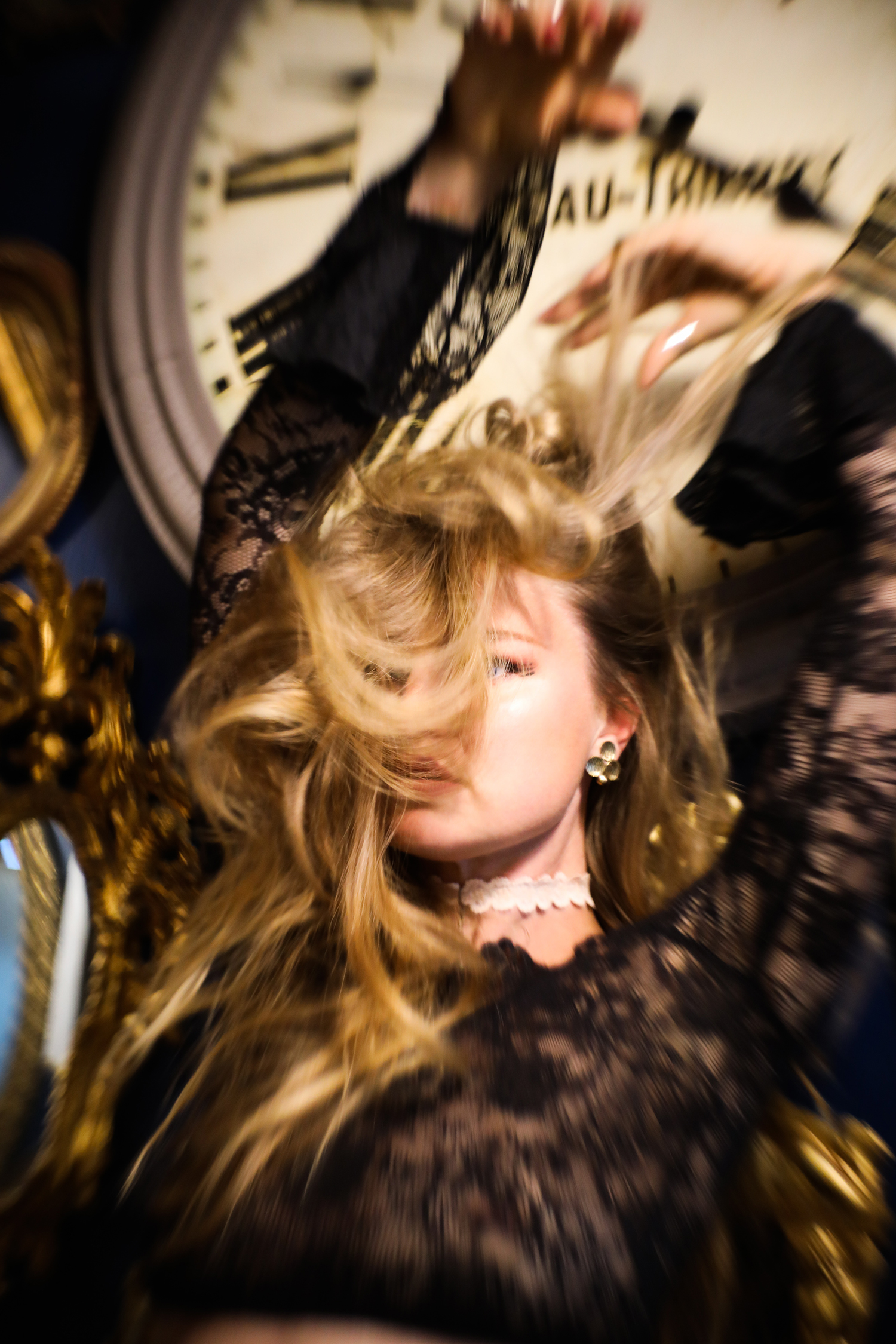Music and photography are two artistic expressions that often go hand in hand. This time, they come together once again through the work of Jennifer Akerman and Angela Izzo.
On one side of the table is Akerman, the driving force behind the musical project Final Child. She has masterfully blended her passion for sound with a striking visual identity. Her journey includes collaborations with renowned producers and songs that have made a lasting impact on film and television. Now, with the release of Cave Woman, Jennifer unveils a new side of her artistry—more mature, raw, and visceral.
On the other side is Angela, whose camera has become an extension of her creative soul. Starting as a photojournalist, her experimental approach has led her to work with some of the biggest names in music and fashion. Her ability to capture the human essence through unconventional lenses has cemented her as a distinctive artist, turning the ordinary into something extraordinary. She is currently directing The Benders Circuit, a documentary that delves into the vibrant yet under-the-radar underground audiovisual scene in Los Angeles.
We had the opportunity to sit down with Jennifer and Angela to discuss the creative process behind Cave Woman, their artistic journeys, the challenges women face in the industry, and the projects that keep them constantly evolving.

Jennifer, let’s start with you. Cave Woman feels like a turning point in your career. How did this song come to life, and what does it mean to you at this moment?
Jennifer: Wow, thank you for saying that, ’cause I really feel like it is! You know, songs have that weird thing of sometimes writing themselves when the time and place are right, and that was the case here. It’s like you blacked out from a crazy night out and have no idea what happened, haha. All I remember is that my writing partner and I were in my studio messing around, and all of a sudden I was like, “Wait, did you say Cave Woman? I love that!” I call it magic, and it’s the best thing ever. It’s the main reason why I love to make music. The song definitely opened up a new door and set the tone for the rest of the album. I could see it all in front of me.
Your music has always had a distinct identity, but this album brings a subtle yet noticeable shift in sound. What were you aiming to express with this evolution, and how did your collaboration with Matt McJunkins shape it?
Jennifer: I knew that I wanted to push myself and work with a producer on this, as I’ve produced all of my previous releases. Matt took it to a whole new place and used sounds and melodies that I would never have thought of, which is exactly why I wanted to work with him! Cave Woman is such a full-circle moment for me, hence why I loved the title, and it has so many meanings. I’ve always called my home studio my cave, and it’s like I’m coming out of that shell into a much more mature version of myself. I’m a believer that answers come as you go, and as we dove deeper into this world, I found the light at the end of the tunnel and had a lot of discoveries on my way out.
Your songs have been featured in major films and TV shows. What’s the creative process like when writing music with a visual narrative in mind? Is it different from writing for a personal album?
Jennifer: Yes! It’s so fun! I love writing to a visual or a brief. To step into someone else’s narrative and story is beautiful and very inspiring. I like my own music to be authentic, so creating something like Cave Woman takes so much longer.
Angela, your work blends photography, film, and experimental visuals. How has your style evolved since you first started?
Angela: I began my journey as a photojournalist, documenting bands, artists, and stories for newspapers and magazines. Over the years, I craved something more—something that would blend my abstract eye with my love for fashion and creative portraiture. This led me to experiment with Lomography, film, AR lenses, and prisms, creating a dreamlike aesthetic for the viewer. It was through the merging of these techniques with traditional photography that Izzo was born.
You’ve worked with some of the biggest names in music and fashion. What’s been the biggest challenge in capturing the entertainment world through your lens?
Angela: I feel incredibly lucky for the journey I’ve had with my camera and the access and opportunities it has given me. One of the biggest challenges I’ve faced in the entertainment world is navigating financial constraints and often working on shoestring budgets. There’s something truly special about authentic content created by artists—work that enhances a vision and brings it to life. Unfortunately, this is sometimes overlooked due to budget cuts, even though I believe the visual element is a crucial part of content creation.
You’re directing The Benders Circuit, a documentary about L.A.’s underground audiovisual scene. What inspired you to tell this story, and what impact do you hope it has on audiences?
Angela: What inspires me most about this story is how I fully immersed myself in capturing the raw energy of offbeat artists and celebrating the underdogs. It’s a true “wave your freak flag” moment—a vibrant fusion of community, chaos, an expression through sound, and custom circuit-bent equipment.
Angela, when working with musicians, how do you visually translate their essence into your work?
Angela: With my background in photojournalism, I’ve mastered the art of capturing the essence of my muse. Rather than taking a traditional approach, I incorporate experimental film fashion curation, unconventional cameras, and lenses—techniques that give my work a distinct quality. The collaboration between Jennifer and I expresses a seamless creative flow between artists, and that energy is undeniably reflected in the images we create together.
Both of you use art as a form of expression. How do you think visuals and music work together to create a strong artistic identity?
Jennifer: I’m a very visual person, and as soon as I’ve written a song I like, I immediately start playing around with cover arts, etc. I grew up having MTV on in my room 24/7, so music and visuals are something that I’m very used to. Sadly, it seems like music videos have lost their importance a little bit, and I do understand why (they can be expensive), but they don’t have to cost a lot, and you can do so much yourself these days! Even though the “day-to-day” reels seem to be what’s more popular right now, I still like to create a depth and mystery around the visuals and world of Final Child.
Angela: Visuals and music undoubtedly go hand in hand. Having directed numerous music videos and art films, I’ve developed a deep appreciation for how artists express themselves not just through sound but through movement and emotion. The musicians I photograph often have an understanding of this dance with the camera—it becomes an extension of their identity. My role is to capture those raw, intimate moments that feel authentic and true to who they are.

Being a woman in music and film still comes with its challenges. Have you ever felt like you had to prove yourself more because of your gender?
Jennifer: Absolutely, and I still do. Coming from modeling, I found it hard to be taken seriously when I first started with music. But you know what? It only made me stronger and wanting to prove people wrong, which has made me work so much harder.
Angela: Photography is still very much a male-dominated industry, which means I have to push even harder to make my mark. I do often see this as an advantage, especially when working with women. I excel at creating a comfortable, safe environment where they can really let go and express themselves. My work portrays distinct feminine and non-binary energy that feels authentic and empowering.
In creative industries, women are often expected to fit certain molds. Have you ever felt the need to push back against those expectations through your work?
Jennifer: If we’re talking about sexuality, then my femininity is obviously a huge part of who I am, and maybe I am more comfortable at exposing it, only IF it’s a part of the story I’m telling. But no, I don’t feel the need to. It’s never been the driving force of my art. I come from Sweden, where women are very independent and open, and I never felt like I needed to be someone I’m not.
Angela: I fully embrace and appreciate my sensual and feminine approach to photography, though it took years of dedication and resilience to earn the recognition I deserve. I’ve made it my life work and brand to create something unconventional and original that stands unique against traditional photography—I am a poet behind the lens, a relentless hard worker, and a visionary storyteller.
And finally, what’s next for both of you? What projects are you working on that you’re excited to share with the world?
Jennifer: I’m experimenting with my live shows right now, and together with remixes of the album, I’m sort of turning it into more of a dance/club experience. With a rock twist! As an independent artist, it’s very expensive for me to play with my full band, even though they’re friends of mine. I want to be able to say yes to a show without having to text 5 people.
Angela: I’m looking forward to continuing to showcase my work in both solo and group exhibitions, including more opportunities to exhibit internationally. I’m also excited to
collaborate with new artists and keep pushing my creative work. In addition to working with fashion brands and musicians, I’m curating a monthly musical showcase for The Benders Circuit at LACDA (Los Angeles Center for Digital Art) in Downtown, Los Angeles. There’s a lot in the works, and I’m excited to keep sharing it!

CONNECT WITH JENNIFER
CONNECT WITH ANGELA
